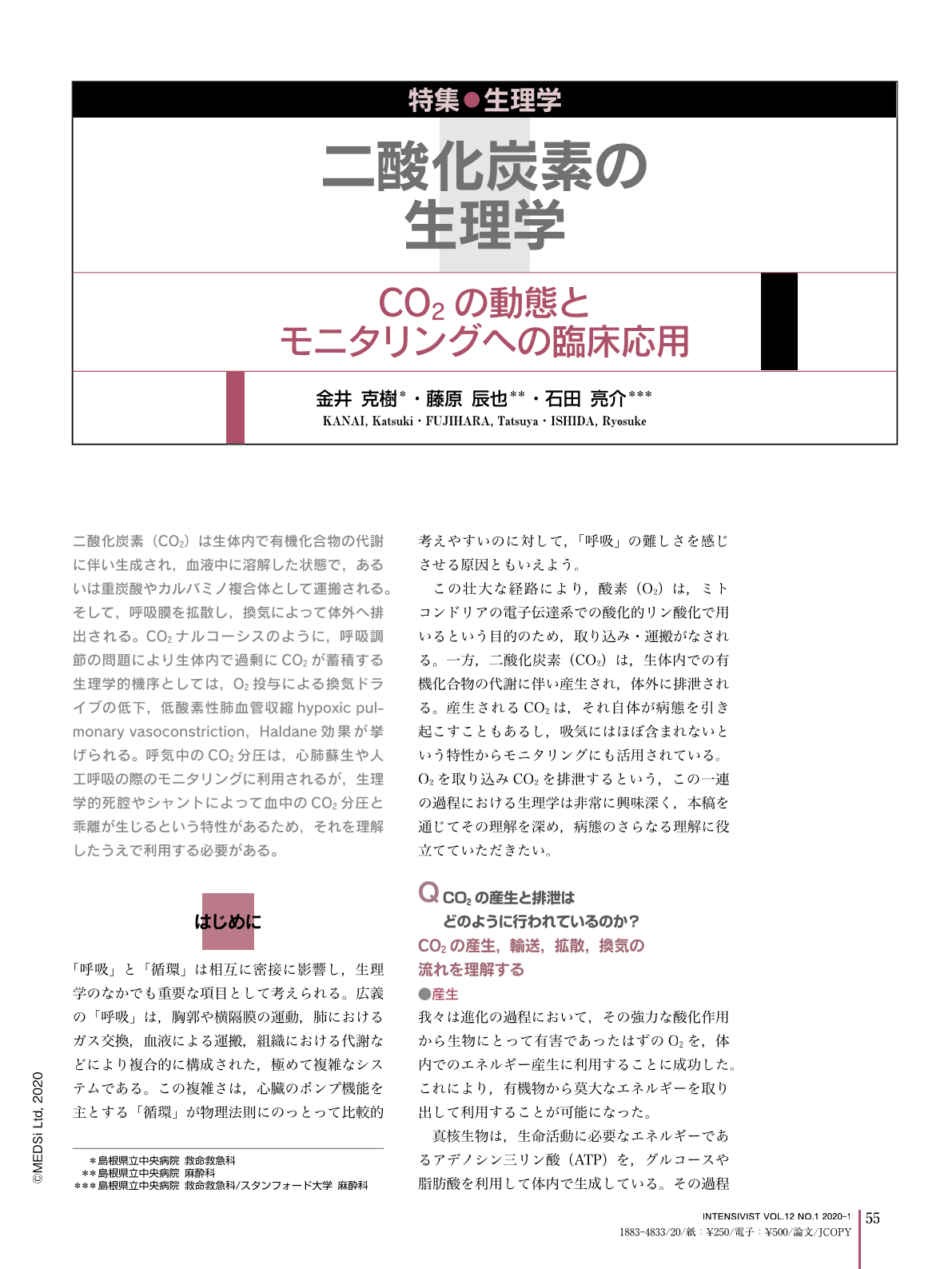Japanese
English
- 有料閲覧
- Abstract 文献概要
- 1ページ目 Look Inside
- 参考文献 Reference
二酸化炭素(CO2)は生体内で有機化合物の代謝に伴い生成され,血液中に溶解した状態で,あるいは重炭酸やカルバミノ複合体として運搬される。そして,呼吸膜を拡散し,換気によって体外へ排出される。CO2ナルコーシスのように,呼吸調節の問題により生体内で過剰にCO2が蓄積する生理学的機序としては,O2投与による換気ドライブの低下,低酸素性肺血管収縮hypoxic pulmonary vasoconstriction,Haldane効果が挙げられる。呼気中のCO2分圧は,心肺蘇生や人工呼吸の際のモニタリングに利用されるが,生理学的死腔やシャントによって血中のCO2分圧と乖離が生じるという特性があるため,それを理解したうえで利用する必要がある。
Carbon dioxide (CO2) is produced by the metabolism of organic compounds, and then transported in the dissolved state, as bicarbonate ions or a carbamino complex. Eventually, CO2 diffuses through the respiratory membrane and is discharged from the body by ventilation. A reduction in ventilatory drive, hypoxic pulmonary vasoconstriction and the Haldane effect are the mechanisms of CO2 accumulation, which can lead to CO2 narcosis. End-tidal CO2 (ETCO2) is commonly used to monitor patients clinically. Although it is non-invasive and useful, we should be familiar with the difference between the partial pressure of CO2 in arterial blood and alveolar air which is derived from physiological dead space or a shunt.

Copyright © 2020, MEDICAL SCIENCES INTERNATIONAL, LTD. All rights reserved.


